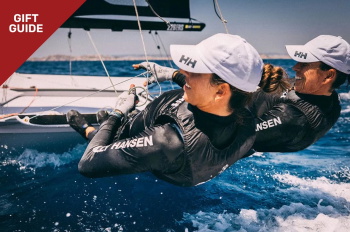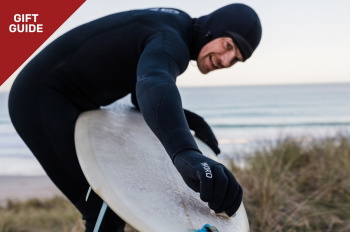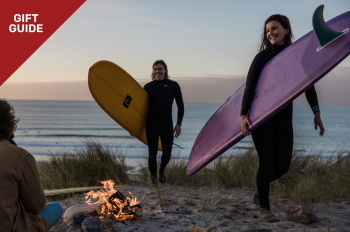The Round The Island Race Explained
What is the annual Round The Island Race?
The Round The Island Race is a one day yacht sailing race around the Isle of Wight, which is just off the South Coast of England. The annual race is organised by the Island Sailing Club.
Who enters?
Every year, over 10,000 sailors and 1,200 boats enter, making it one of the world's biggest yacht races. It's the UK's fourth largest participation sporting event, following the London Marathon and the Great North and South Runs. From professionals to amateurs, the race sees a diverse mix of participants, creating a competitive atmosphere on the water.
What types of boats enter?
A vast array of boats participates each year. There’s everything from high-performance racing yachts and multihulls to classic wooden sailboats and family cruisers. The race is open to boats of various sizes and classes, including IRC-rated yachts, one-design classes, sportsboats, and cruiser-racers. This mix of vessels adds to the excitement, as cutting-edge designs race alongside time-honoured classics.
The race is open to the following boats and classes.

What’s the route?
The route covers 50 nautical miles in a circular route around the Isle of Wight. The race both starts and finishes in Cowes, the fleet sails in a clockwise direction around the island, navigating through landmarks like The Needles, St. Catherine’s Point, and Bembridge Ledge.

How long does the race take?
The race can take anywhere from a few hours for the fastest boats to most of the day for others, depending on weather conditions. Most of the fleet will take many hours to complete the race, the course records stand at 3h 43m 50s for a monohull boat, set by Mike Slade on ICAP Leopard in 2013, and 2h 22m 23s for a multihull boat, set by Ned Collier Wakefield on Concise 10 in 2017.
What do the sailors wear?
Sailors in the Round The Island Race dress for both performance and safety, with specialised gear to handle the varying conditions at sea. It is esssential to layer up in unpredictiable weather, and it's likley that most sailors will be wearing at least 3 layers.
Layers:
Base layers wick moisture away from the skin, keeping sailors dry and comfortable throughout the race, no matter how intense the action gets. Mid layers provide essential insulation, helping sailors maintain their body temperature during cooler parts of the race.
We recommend the Helly Hansen Comfort Dry Base Layer which delivers effective, light insulation year-round. It’s made to perform on all your adventures. We'd pair this with Helly Hansen Crew Midlayer Sailing Jacket 2 which is a classic, waterproof/breathable, windproof and warm, with HELLY TECH® Protection technology – plus fleece lining.

Shop this Base Layer Shop this Mid Layer
Shop Helly Hansen
Trousers (Skiff Suit):
Trousers (skiff suit) offer full-body protection against water and wind, ensuring sailors remain dry and agile on deck.
We recommend the Zhik Superwarm X Skiff Long John Wetsuit, which is enhanced with advanced technologies, including graphene-infused fleece, which increases its thermal warmth and the temperature range it can be used in. Due to its natural hydrophobic properties, it repels water, keeping the suit lighter when on the water, while increasing body heat retention, which is essential as when sailing

Shop this Skiff Suit
Shop Zhik
Jackets:
Sailing jackets are designed to be waterproof and windproof, shielding sailors from the elements while allowing freedom of movement. A coastal jacket offers additional protection against the harsh maritime environment, combining durability with advanced weatherproofing technology.
We recommend the Musto BR1 Solent Sailing Jacket which is built for performance and is long in style and regular in fit. Comfort is key with brushed tricot and mesh linings throughout. Fully seam sealed, there's no way that you'll be feeling cold or soggy during your time on the water in this jacket. Along with this we also recommend Gill OS2 Offshore Sailing Jacket, which has a 2-layer fabric combined with advanced Hydrophobic and Hydrophilic technologies to effectively transport moisture away from the skin, resulting in a highly waterproof and breathable finish.

Shop this Sailing Jacket Shop this Sailing/Coastal jacket
Shop Musto
Shop Gill
Safety:
Lifejackets are mandatory for all sailors, they provide crucial buoyancy in case of an overboard incident, ensuring safety even in rough waters. A buoyancy aid gives an extra layer of flotation support, particularly useful in rough seas, enhancing a sailor's ability to stay afloat and be easily spotted. By wearing this specialised gear, sailors ensure they are well-prepared to tackle the challenges of the race, staying safe and comfortable no matter what conditions they face.
We recommend the Spinlock Deckvest, this is a fully featured, lightweight, front opening lifejacket harness with automatic inflation and optional harness release system. For buoyancy aids, we recommend the Zhik P3 PFD Buoyancy Aid, designed for high performance sailing, from club racers to national champions, the smooth racing cut features a large neck opening and arm holes to allow for maximum freedom of movement.

Shop this Lifejacket Shop this Buoyancy Aid
Shop Spinlock
Shop Zhik
What are the safety measures?
All boats are required to meet stringent safety standards, including carrying essential safety equipment such as life jackets, flares, and first aid kits. The race organisers coordinate with local maritime authorities and the RNLI (Royal National Lifeboat Institution) to provide rescue and emergency services throughout the event. Additionally, race briefings and weather updates are provided to all crews, ensuring they are well-prepared to handle the varying conditions they might encounter during the race.
What’s the prize?
While bragging rights is the best prize of all, there are also trophies and awards for various categories. Almost 200 prizes and 100 trophies and cups are up for grabs at the event, where boats of all shapes and sizes compete for their respective classes and for overall trophies.
The most famous prize is the Gold Roman Bow, which is awarded to the overall winner of the race (now the IRC division) since the very first race in 1931, and there are numerous other prizes for different classes and divisions, ensuring that sailors of all levels have a chance to be recognised.

See the bottom of our blog for an extensive list of the trophies.
How can I enter?
Entering can take place online, where you will need to fill out a form. Monohulls that don’t have an IRC rating certificate or an IRC Single Event Rating can still take part using the ISC Rating System. This involves supplying some simple measurements on your entry form. You will be allocated a rating based on a time allowance. As part of your entry, the Race organisers will need your list of crew – it is particularly important in emergencies.
Prices change between boat size and if you manage to get an early bird or not, with this in mind, prices can range between £130 and £315.
Shop the full Wetsuit Outlet range here.
List of all prizes, Image from the Island Sailing Club:

Updated on 25th June 2024
Originally published on 5th June 2024 in Guides

































































 Visit the US site
Visit the US site  Continue to DE
Continue to DE